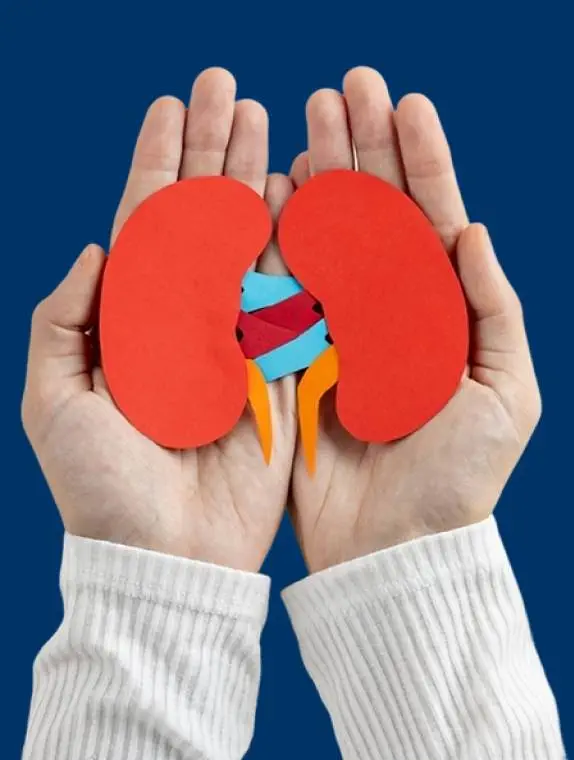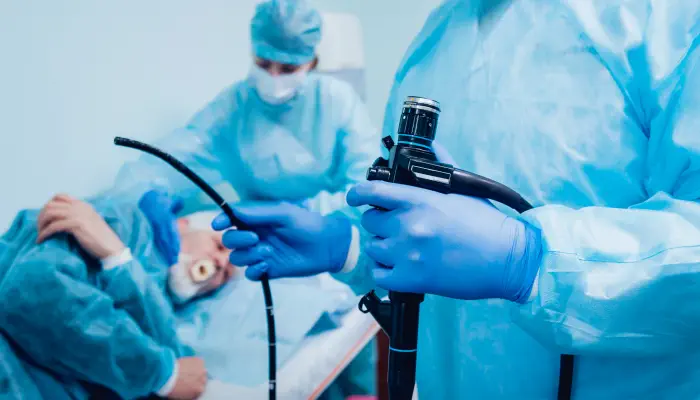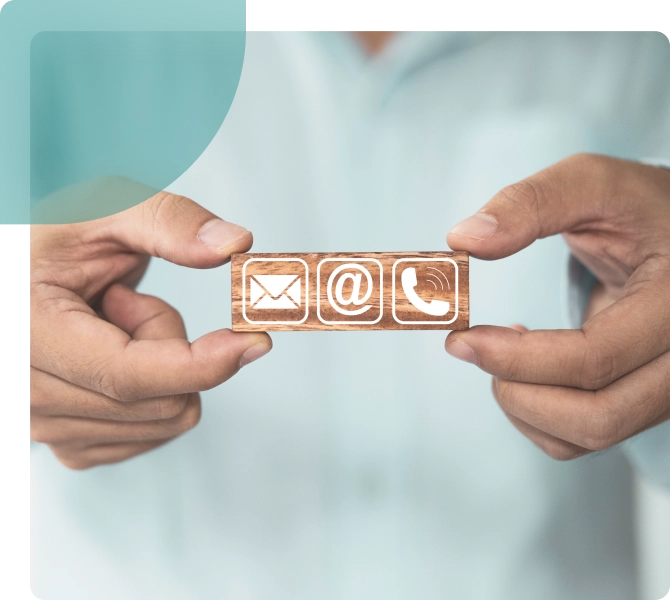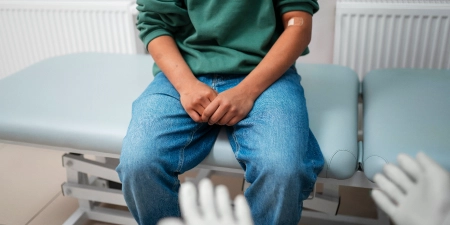Cystoscopy Surgery

Revive Your Bladder With Transformative Cystoscopy Care
Cystoscopy is a minimally invasive diagnostic procedure used to assess and treat urological problems in the bladder and urethra ( the tube that drains urine from the bladder to the outside of the body).
All cystoscopy procedures require a Cystoscope, a small device that allows your urologist to view the inside of your bladder and urethra. There are two types of cystoscopes: Flexible and rigid. Dr Aarthy will decide which one to use, depending on the procedure.
Dr. Aarthy is a top uro surgeon in Chennai. She is highly regarded for her expertise in Cystoscopy. Thanks to her timely and accurate diagnoses, her modalities and personalised treatments have helped hundreds of individuals recover from urethral and bladder issues.
If you are seeking patient-centric care, Dr. Aarthy is the specialist you want to consult with.
When is Cystoscopy the Right Choice?
Dr. Aarthy may opt for cystoscopy for any of the following reasons:
Expert Cystoscopy Care for Precision & Relief

- Before Surgery
- What to Expect?
- Post-Surgical Care
Cystoscopy: What to do Before Surgery?
Pre-surgical preparations require a specific protocol to ensure your safety during the procedure.
Make sure to inform Dr Aarthy about the medications you are taking, your medical history, and any possibility of pregnancy.
You may be asked to give a urine sample to check for UTIs if necessary. If the diagnosis reveals any signs of infection, you may require pre-procedural treatment to rectify the issue before the appointment.
You will be advised to refrain from eating or drinking for at least eight hours before the procedure to facilitate anaesthesia administration.
Your doctor will advise you to temporarily refrain from taking certain medications or have them with a small sip of water. Kindly follow your physician’s advice in this regard.
If you require sedation during the procedure, ensure that you arrange for someone to drive you home afterwards.
Cystoscopy: What to Expect?
Cystoscopy procedures may take anywhere from fifteen to thirty minutes, depending on the type of anaesthesia. Here’s how the procedure works:
You will first be asked to empty your bladder, following which you will lie on your back on the procedure table with your feet up in stirrups and your knees bent.
You may be administered a sedative to keep you relaxed but awake and aware during the procedure. If not, you may receive general anaesthesia, which will render you entirely unconscious.
A numbing medication will be applied to your urethra to desensitise it. Once the area is numb, a tiny cystoscope is inserted to view the insides. Larger scopes can be utilised when tissue samples or surgical instruments are required.
Dr Aarthy will examine your urethra and bladder. The cystoscope, which has a lens at the end that functions similarly to a telescope, allows for a magnified view of the inner surfaces of these organs.
Your bladder will be filled with sterile fluid to expand it for improved visibility. As the fluid fills, you might experience an urge to void your bladder. You’ll be able to go after the procedure is complete.
Tissue samples may be collected during the procedure. Your doctor may remove tissue samples for laboratory analysis or perform other procedures while performing the cystoscopy.
Cystoscopy Surgery: Post-Procedural Care
You may likely experience mild discomfort post-procedure. To ease the sensation and help you regain normalcy, you can:
- Take a warm, soothing bath according to your doctor’s advice.
- Hold a warm, moist cloth against the urethral opening.
- Hydrate adequately every hour and void the bladder to flush out the urine and help relieve the pain.
- Consult your doctor if you bleed while urinating, experience pain when voiding your bladder, have an inability to pee or observe signs of infection.
- Schedule a follow-up appointment to discuss your results after your procedure.
Benefits of Undergoing Cystoscopy

Crystal-Clear Images
High-definition images of the internal structures of the bladder to identify the causative factors for pain and discomfort.
Easier Procedure
Quick and painless procedure with almost nil recovery time and risk of post-procedural complications.
Quick Results
Speedy diagnosis to expedite the treatment process and enable quicker relief from symptoms.
Treatment Combinations
Cystoscopy can be used alongside bladder instillation, a procedure in which medication is administered directly into the bladder to provide additional treatment for infections in patients who need it.
Your Comfort is Our Priority





